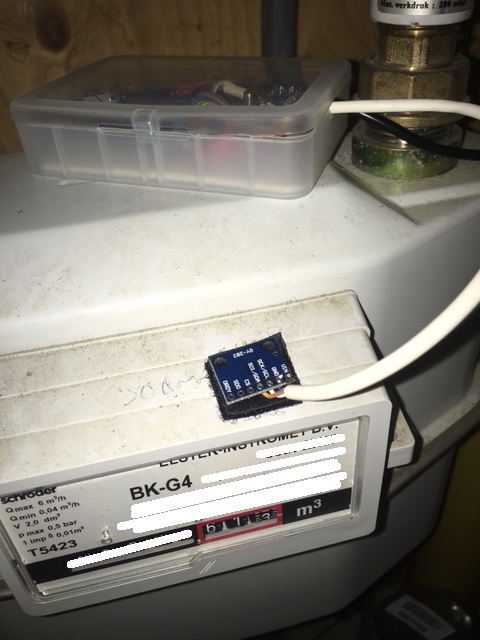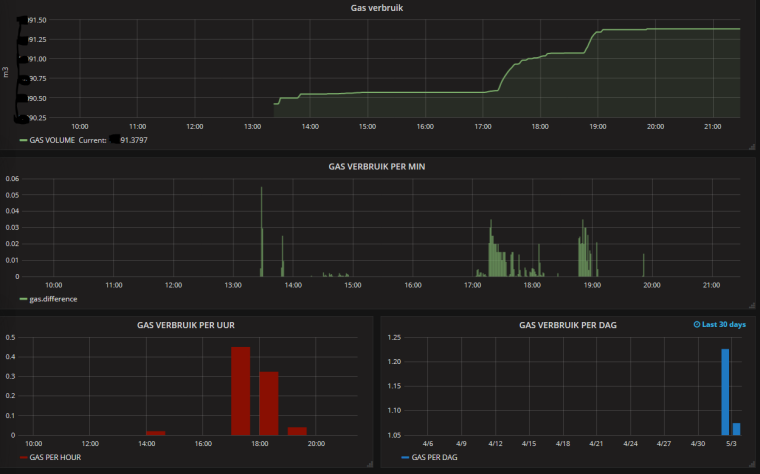I am migrating step by step from pimatic to Hass. I still think pimatic is a lot easier to setup and to make rules, etc.. But the community behind hass is big and the ammount of items which can be controlled is huge. The mysensor part is not optimal I am using the MQTT gateway and hope some further development is made.
dynamite
Posts
-
HomeAssitant MySensors plugin Roadmap -
Multisensor PIR based on IKEA Molgan@ricmail85 @Yveaux basically mine was shortcut by testing Some connection which I should not have Done....🙄
-
Multisensor PIR based on IKEA Molgan@ricmail85 hi iT has been a while ago but as far as I recollect I had the same problem with one of my sensors ...
In normal situation the sensors gives a high signal for approx 30 sec.
In the bricked PIR I have replace the pir board by a cheap and modified pir from Ali.
-
Gas Meter Reading Using a Magnetometer@pihome Hi i am powering it with adapter. So no batteries used.
-
Gas Meter Reading Using a Magnetometer@Ed1500 The amplitude is quite simple it is just measuring the (max) top and (min)bottom if the direction of your signal changes.This is quite consistent during the readings and if due to temperaturen or whatever cause it is changing the max and min are adjusted. However the period / frequency of the curve is not consistent as this is directly related to the consumption.
I think the linear approach to the curve is already quite accurate. But if you have a better routine in mind I love to hear. Basically I just have to adjust the array in which the different steps are calculated.I like the idee of having a dedicated attiny as I know from my sketch that in case of high volume the changes is the y are quite fast and the is (almost) no time to communicate with the gateway etc.
-
Gas Meter Reading Using a Magnetometer@dpcr the more steps you choose of course the more accurate it gets. At this moment I have divided the Total cycle in 20 steps. I have made this a parameter in my code.
-
Gas Meter Reading Using a Magnetometer@Ed1500 The magnetometer is picking up a change in the magnetic field. Normally the sensor itself is moving and so changes in x,y and z etc can be detected. In case of the gas meter the sensor is stationary but the change in magnetic field due to the rotating magnet on the dial is detected. This will give you a snow wave.
I presume In case no magnet still small changes can be detected due to rotating parts within the meter.
-
Gas Meter Reading Using a Magnetometer@zboblamont That is a quite nice price indeed.
-
Gas Meter Reading Using a Magnetometer@jumping No I do not. Basically I use my gateway to store and retrieve the pulse value.
-
Gas Meter Reading Using a Magnetometer@dpcr Hi, I need to recalibrate to see if the reading is still OK. Somewhere during a total reset I have lost track. But it is on my to do list to get everything up and running again.
As far as I could recollect an overshoot had no influence on my code as the number of pulses for a total cycle is consistent within my code.On the Y reading from the sensor I do have a running average smoothing.
Basically every cycle is splitted into rising and falling part. Each splitted into a fixed number of steps. Based on the current reading of y the number of pulses is calculated within that step. So the amount of pulses within a rise or fall can never be more than the number of steps within that cycle.I am thinking of making the code more simple and only give a pulse on the changes and maybe one in the middle. That would give me about 4 pulses per cycle.
-
Gas Meter Reading Using a Magnetometer@jumping Hi I have used the magnetometer. (GY-282 HMC5983)
I these are the +/- of both the systems:
- More easy to locate on your gas meter
- Higher accuracy of output (more pulses per cycle)
- Code is more complex
Read Sensor
- Simple code
- Exact installation from position
- 1 puls per round
-
Gas Meter Reading Using a Magnetometer@Yveaux nice! and what code are you using? or are you referring to putting the ir sensor to the meter?
-
Gas Meter Reading Using a Magnetometer@gohan Yes i have Seen them as Well that would be the easy way out ;-)
I am just curious wether i am picking up a workable signal when i stick this sensor to it. If so it would make installation quite simple.
-
Gas Meter Reading Using a Magnetometer -
Gas Meter Reading Using a Magnetometer@Yveaux Hi thanks for the suggestion. Basically the position I am using now gives me a very accurate signal. It is more the small changes in the Sine curve which could result in miss reading. But I have added some filtering by appying a running average.
I have tried other position just to see the results. Basically if you stick it to close to the magnet used, like the official reed position it will go in overload and magnetic reading is maximized for a period.
-
Gas Meter Reading Using a Magnetometer@dpcr Hi the reason that it is sometimes not a sine wave is the reason why I used a fixed number of pulses between the top of bottom. So in case the flow is very low as for your pilot light it will detect every puls. In case you have a very heavy flow pulses can be skipped as long as the change is detected then in my case 10 pulses are submitted to the gate way. I was detecting in your original sketch sometimes extra pulses were submitted as the sine was little bit rising or the opposite dropping.
The code for just detecting rise and fall can be quite straigh foreward. I might make a second version like that...just for the record.
My Setup is quite straight forward. A small box with the arduino pro mini and radio. A cable to the magneto sensor. In my case water proof is not required. I have applied the sensor by Velcro strap so I can remove the setup in case of "Maintenance".

-
Gas Meter Reading Using a Magnetometer@dpcr At the moment I do not store the top and bottom value permanently. In case of a power failure I will "loose" to the max two rounds of the wheel on pulses as it uses that to calibrate the top and bottom. That could be reduced to potentially only one cycle. Which is in my case 0,01m3 to 0,02 m3 of gas indication.
After the power failure the process starts in the calibration loop which is ended only after the required cycles have registered. So this could last 30 sec in case you are having a shower but can last a week if you are away...I will post a picture of my setup later.
Now I am thinking of it. If you do not care about the accuracy that much you do not need the top and bottom values at all. You just need to detect the rice and fall. That still gives you double the accuracy than a reed contact or Hall effect. The sketch for that will be very simple and after power down you can continue most probably without loss of pulses.
-
Gas Meter Reading Using a Magnetometer@dpcr Nice adjustment of your Original code. Based on your Original version I have started coding as well as I like the simpleness of just adding a sensor to the meter without taking care of the direct position.
My current code can be found at github via the following link:https://github.com/rspaargaren/Read_Gasmeter/blob/Workinprogress/Read_Gasmeter.ino
Basic differences are:
- I have removed the fram reference but this could be added again if you use it.
- I have added a different setup sequence for fixing the top and bottom. In my case it waits until four changes in direction have occured. So no direct gas flow have to flow after a restart.
- The number of pulses between a change in direction is fixed independent of a change in top or bottom. So in my case every half a cycle will give ten pulses and a full cycle 20 pulses.
- The results are submitted to the gateway after a intervall but also after half a cycle.
- The top and bottom is checked after each cycle. So in case of major difference the interval is changed.
- During normal run, the reading of the y value is executed within the loop. So basically the arduino has time to do some other stuff as well in between the readings.
The code is currently working but requires some clean up. Also I would like to make an option to store the values at the gateway and maybe change the hardware to an ESP version so I can have multiple ways of output. Like MQTT.
This is the current output in Grafana:
-
Multisensor PIR based on IKEA Molgan@gijss Hi let me check upon that as the PIR has not been on the top of my priority list. I have one of the PIR based on LDR sensor. But I was working on a BH1750 sensor. So most probably the code is related to that version.
-
Anyone tried the $199 Monoprice 3D printer?@kalle tempting....!
